|
Think how HWA and RPA together can help your business to: REDUCE COSTS INCREASE PRODUCTIVITY GAIN REAL END-TO-END CONTROL INCREASE SLA COMPLIANCE STAND UP IN COMPETITIVENESS Forewords: is Automation the ultimate answer? IT automation is nowadays pervading the market, especially in conjunction with virtualization. Hence, one may be tempted to consider those two initiatives as the magical solution to reduce IT costs. They may indeed, but let’s start with confirming and arguing few simple statements: So, should companies go towards automation and virtualization? Definitely yes. Wisely. Many current processes are the results of years of experience, acquired when tasks were made by people, and are possibly the best expression of a human organization. They may not necessarily make sense, though, when IT automation comes into play. One example: Fulfilling a purchase order from your customers, may take several people to perform tasks and revise data for consistency and correctness. It is evident that many of such tasks are repetitive and “purely-algorithmic”. Hence, besides automating the process, you can simplify it since many steps may not be required at all once you get rid of the human-error factor. The following picture gives the idea in a simplified way. Figure 1 - Processes can be optimized before automating What is Automation (and RPA and Workload Automation) by the way? Automation, by itself, is a generic term that can be given a variety of meanings (see for example this post on this community). Without exploring the many possible interpretations of the term, we will focus here on two subdomains: Robotic Process Automation (RPA), intended as implementing robots that do things that were done, or could be done, by humans. Workload Automation (WA, or WLA), intended as the discipline of scheduling, controlling, coordinating (in a word orchestrating) the execution of IT processes that were never intended to be performed by humans anyway. We will call them batch processes here (please forgive the vagueness of this term). What’s the difference? A person can actually fill in a web form, typing on the keyboard, and this a typical task that can be done by RPA. But nobody actually copies the content of a database into another, at the most people would launch the operation and wait for it to complete. Why both RPA and Workload Automation? By the simple explanation above, the golden question rises spontaneously: Can a good RPA tool give me also Workload Automation capabilities? After all, one of the human actions it emulates could be launching batch processes… The short, simple and sincere answer is “sorry, but no”. The reason is that Workload Automation goes far beyond the mere starting and checking completion of batch jobs. There is so much science behind orchestrating IT workflows to deserve the existence of enterprise-grade products like HCL Workload Automation (HWA), whose features allow a comprehensive control of the digital business. These features vary from sophisticated run-cycle and calendar management, to predictive analysis, to automatic recovery actions, to critical path management and SLA reassurance, just to mention few. There is no RPA tool that can do that, especially on a large scale, and there is no need to have one, given the existence of HWA. On the other hand, RPA tools also have developed a lot, including things like text and voice recognition, document management, natural language interfaces, and so forth. RPA tools can also be specialized in specific industries or business needs, like
For the above reasons, RPA and Workload Automation have minimal or no overlap at all, and both can be leveraged in conjunction for automation purposes. Integrating HWA, RPA and the cloud A complete business transaction may encompass interactions among humans, some of which can be replaced by RPA and some may instead be mandatorily assigned to somebody, together with batch transactions. Integrating HWA with an RPA tool provides end-to-end control and visibility, as well as bringing considerable benefits in term of costs and productivity. The following use cases are not exhaustive, but illustrate such benefits, specifying where virtualization can be involved effectively: Invoking HWA from RPA Fulfilling an online request that requires batch executions, requires RPA to trigger HWA workflows. The following is an example that illustrates the idea: Figure 2 - Schematic flow RPA calling HWA The above example can be extended to cover other use cases like:
Invoking RPA from HWA Many IT flows require human intervention when
Figure 3 – Scenario highlighting a HWA aspect The above scenario also highlights an important aspect of HWA, that is the ability to commission and decommission virtual resources based on dynamic conditions, which is important also when integrating with RPA, since RPA itself can be instantiated and removed on a per-need basis, optimizing virtual resources costs. Conclusions Far from believing this was an exhaustive discussion, I am still confident that the examples and considerations exposed allow us to list 5 reasons why you may want to integrate HWA with your RPA tool: REDUCE COSTS:
Want to learn more? Contact me or schedule a demo of HCL Workload Automation !
0 Comments
Your comment will be posted after it is approved.
Leave a Reply. |
Archives
July 2024
Categories
All
|
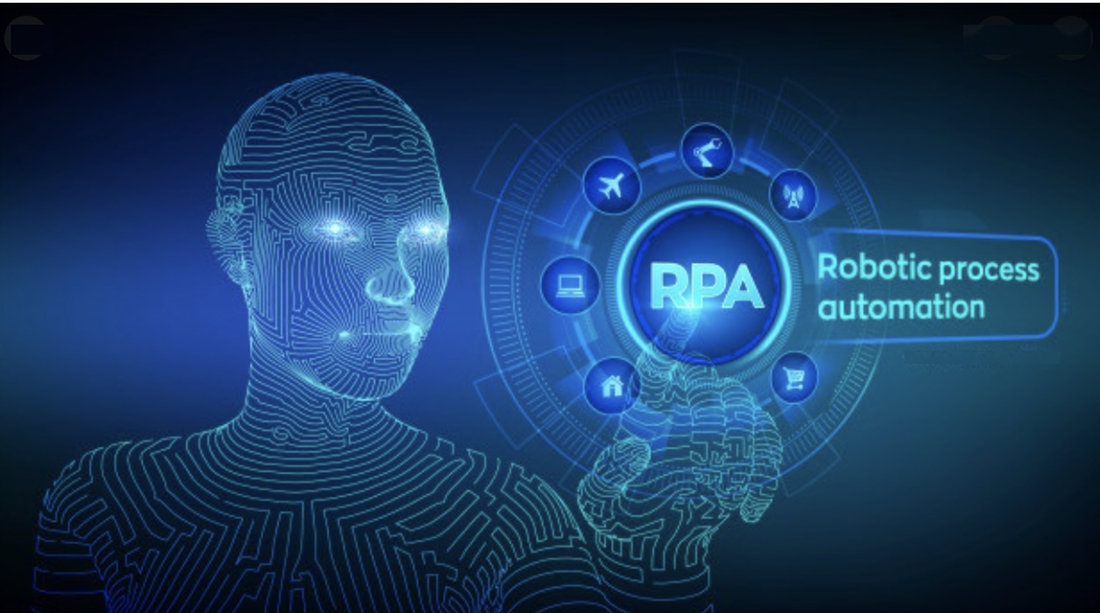
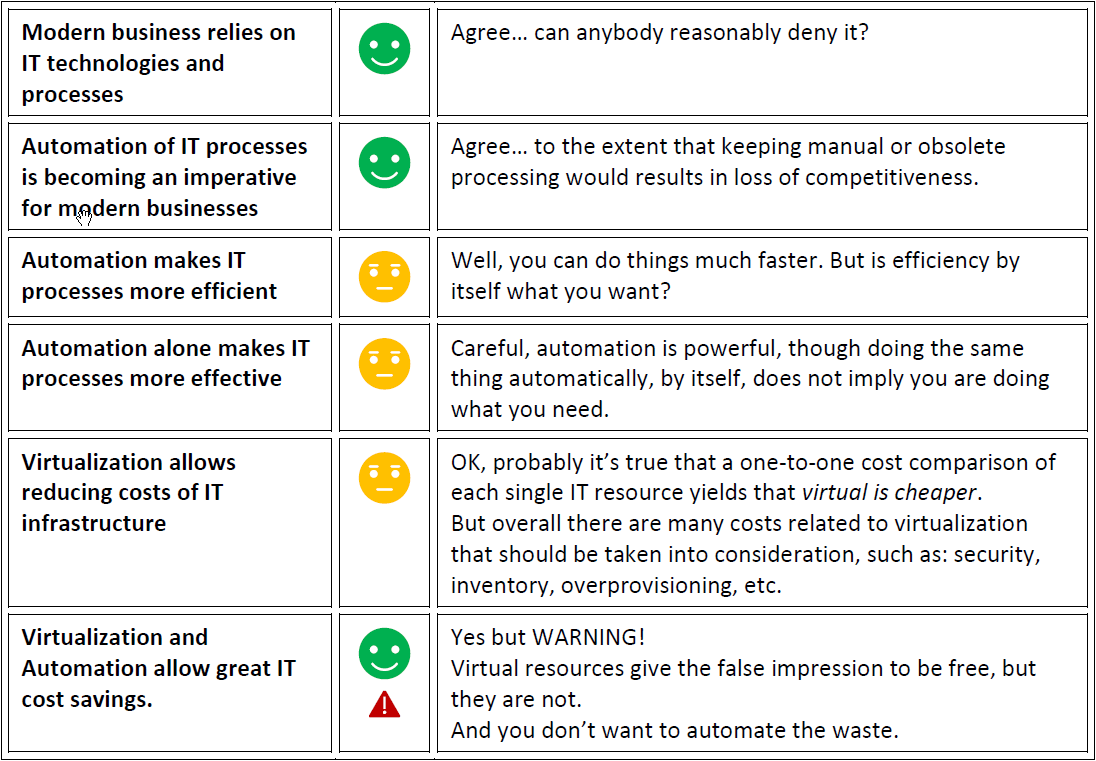

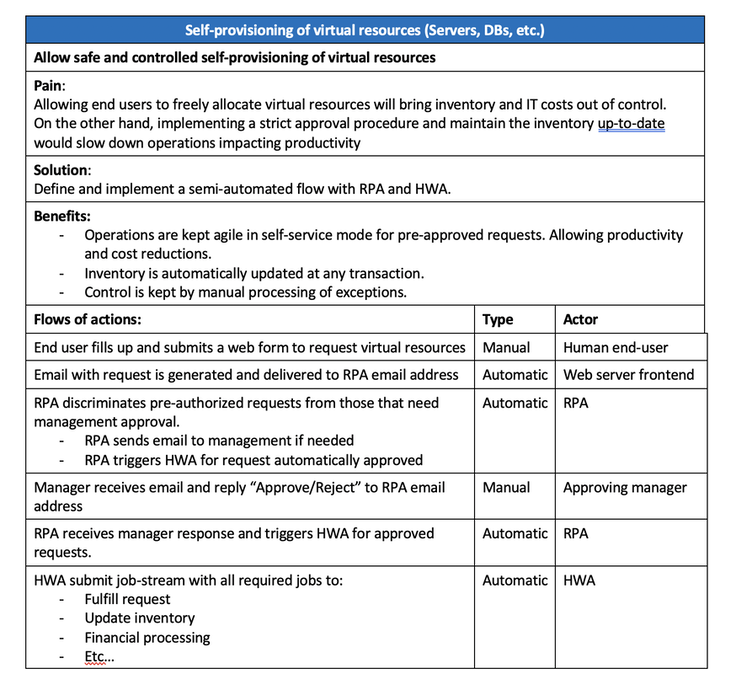
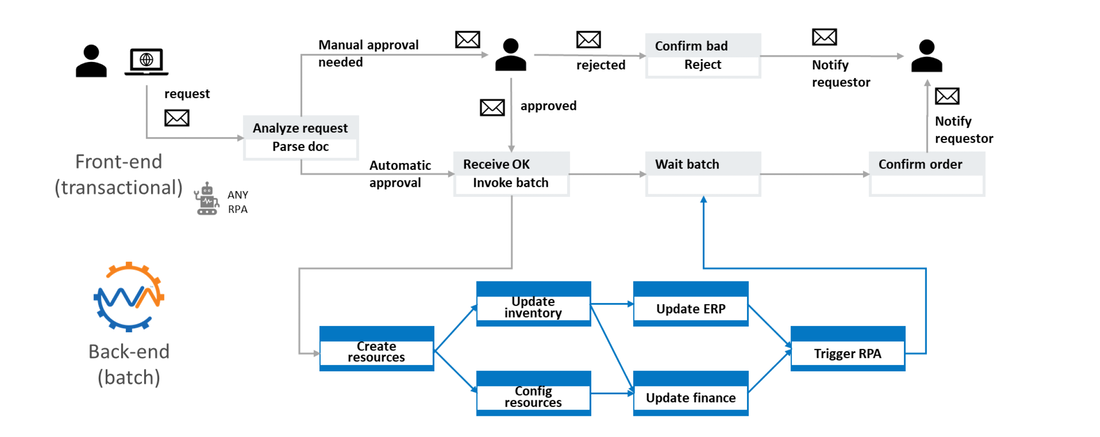
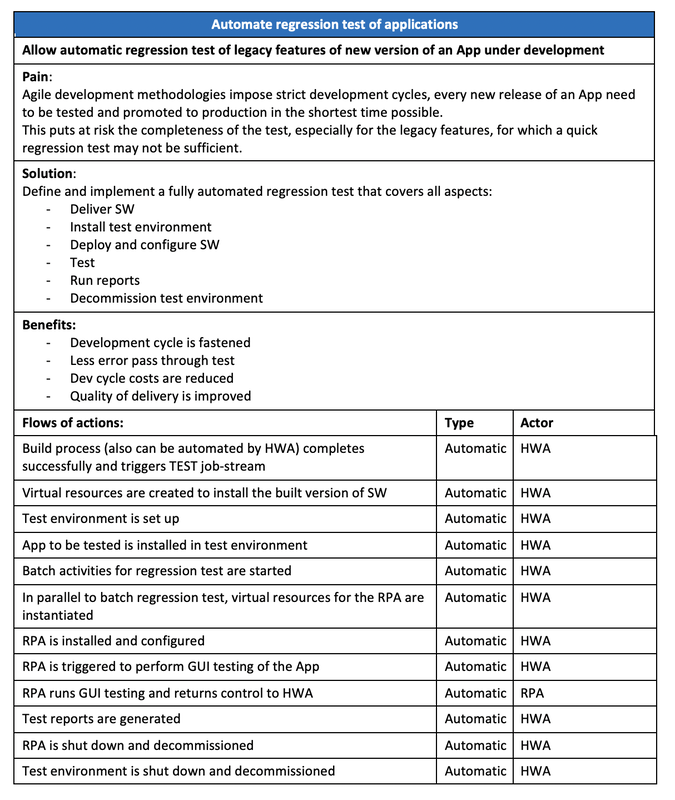
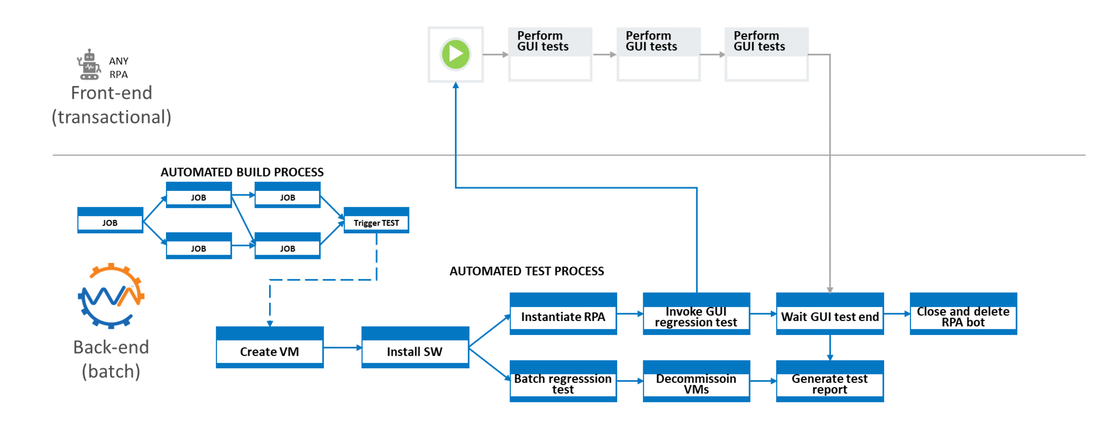


 RSS Feed
RSS Feed